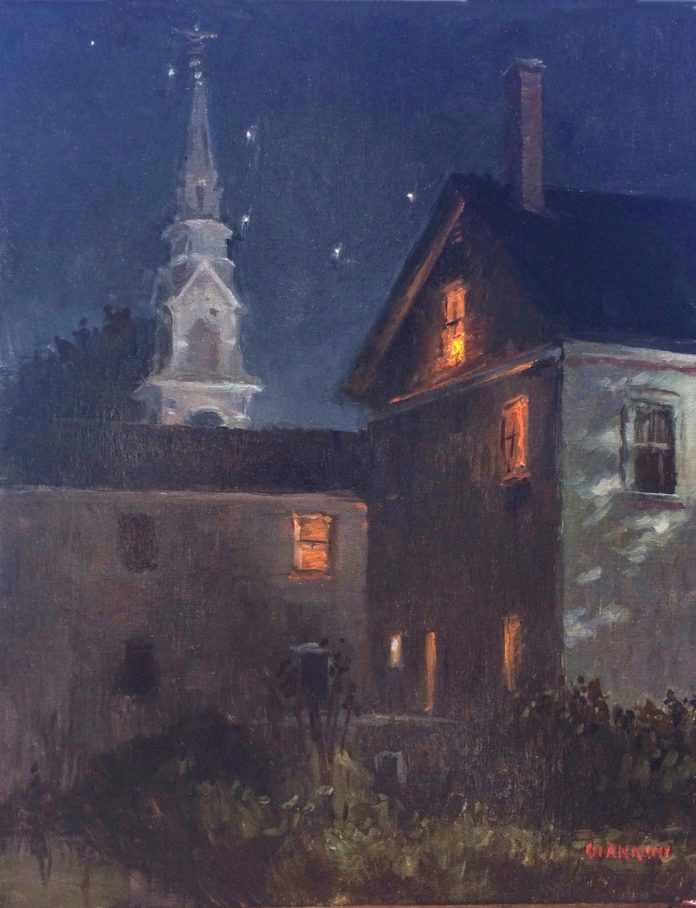This Maine artist is concerned with understanding and painting the total appearance of subjects rather than dashing off fleeting impressions. (Bonus: See the step-by-step process of two of his works.)
Facebook followers were amazed by the sequence of photographs Stephan Giannini posted that documented the slow, steady progress of a 16 x 12-inch painting of apples hanging on a tree. That painting is reproduced on the cover of this issue. The artist worked on that plein air piece for five hours every day over a total of six or seven days.
His online friends were surprised that each time he posted photographs of the carefully rendered surface, he wrote that he still had a long way to go to resolve his studies. Many commented that they would have gone home completely satisfied after one five-hour session of work, especially since the subject was one that could have been painted with a few bold strokes of oil color.
Giannini’s Facebook friends were even more surprised when he followed that first effort by creating an even larger (30 x 14-inch) plein air work of another group of hanging apples. There was no question that both paintings were stunningly beautiful and presented apples in ways few would have considered.
Three preliminary stages of “Apples, Hope Orchards”:
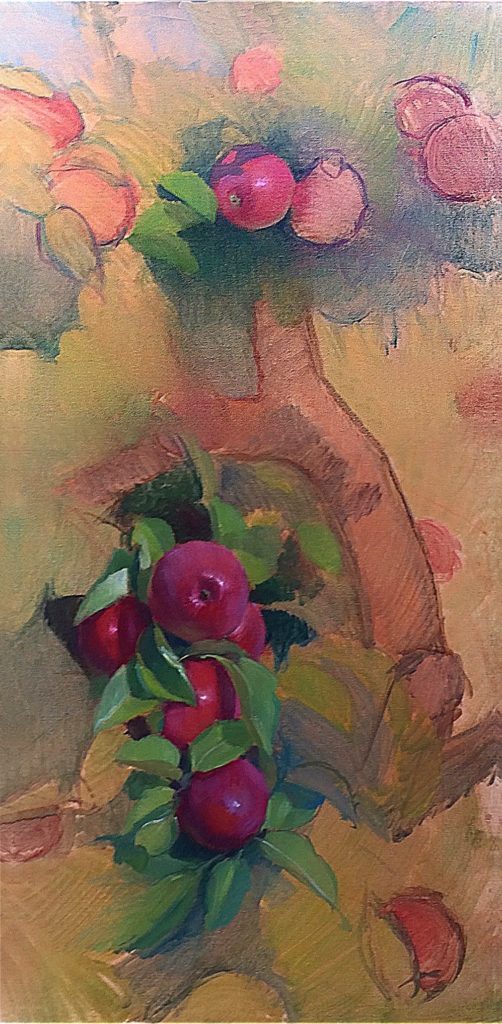
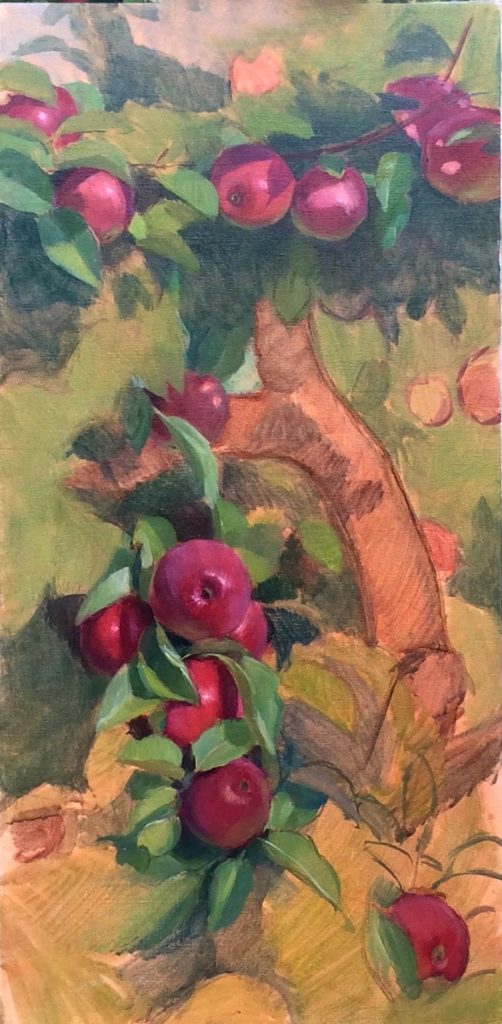
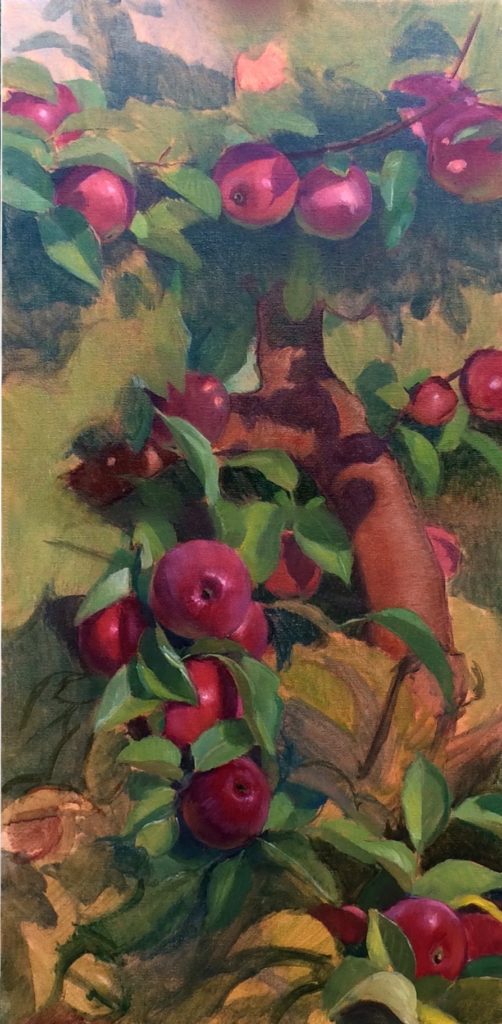
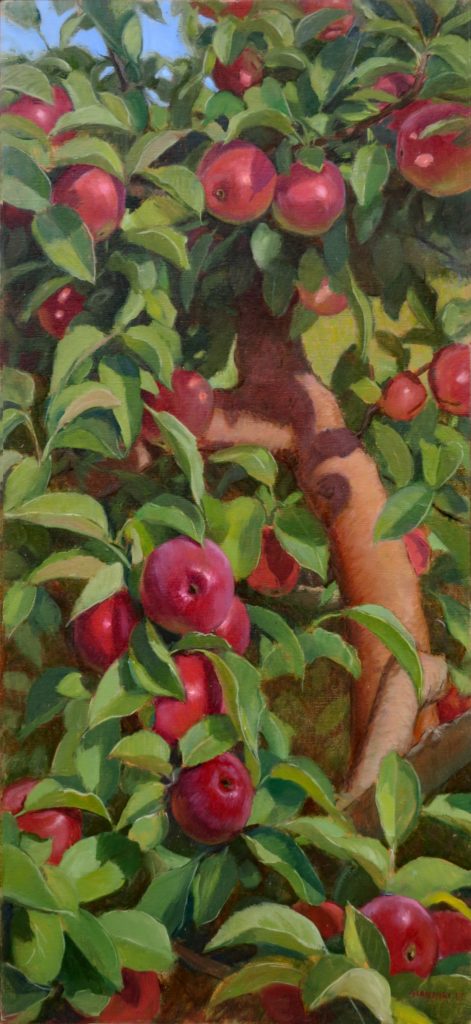
He presented familiar objects in a completely new way and, in the process, asked observers to reconsider what they know about the fruit. The paintings were clear evidence that by taking a careful, thoughtful, sensitive approach to presenting a truth about nature, Giannini was identifying plein air painting as a means of achieving another level of expression.
“I had been thinking about the subject for a long time, but I didn’t plan for the two paintings to take so long to complete,” Giannini recalls. “I wanted to treat the hanging apples as a still life and not a landscape with deep space. I tried relying on photographs to complete the paintings, but I didn’t like that. Direct observations are much more informative, so I headed back to the orchard to complete the pieces from life.
“I decided a long time ago to be more concerned about how I spend my days than about painting plein air products. In the case of those two apple paintings, I was happy to spend long days trying to understand and paint the beauty of red apples hanging in dappled light. I was fascinated by the subtle changes in the color when there was a film or dust on the surfaces that muted the colors and shifted the values.
“I gave almost as much attention to the leaves, because they too were richly varied surfaces. I talked to the owner of the orchard about the apples I painted and about the yearlong process of growing the fruit, and her information helped to increase my understanding of what I was painting.”
Giannini goes on, “At times, I would like to be more expressive and bold with my plein air paintings than I was when painting the apples, but when I have tried being looser and more suggestive, I was not satisfied with the results. That approach just doesn’t work for me. But as tight and specific as my paintings might be, I am not interested in going as far as using the sight-size method or other means of making exact representations of what I see. I had some training in using the sight-size method when I took classes with Bruno Surdo at the Palette & Chisel Academy of Art in Chicago, and while I understand how that can help representational painters, it’s not for me.”
Two preliminary stages of “Heartfelt Farm Apples”:
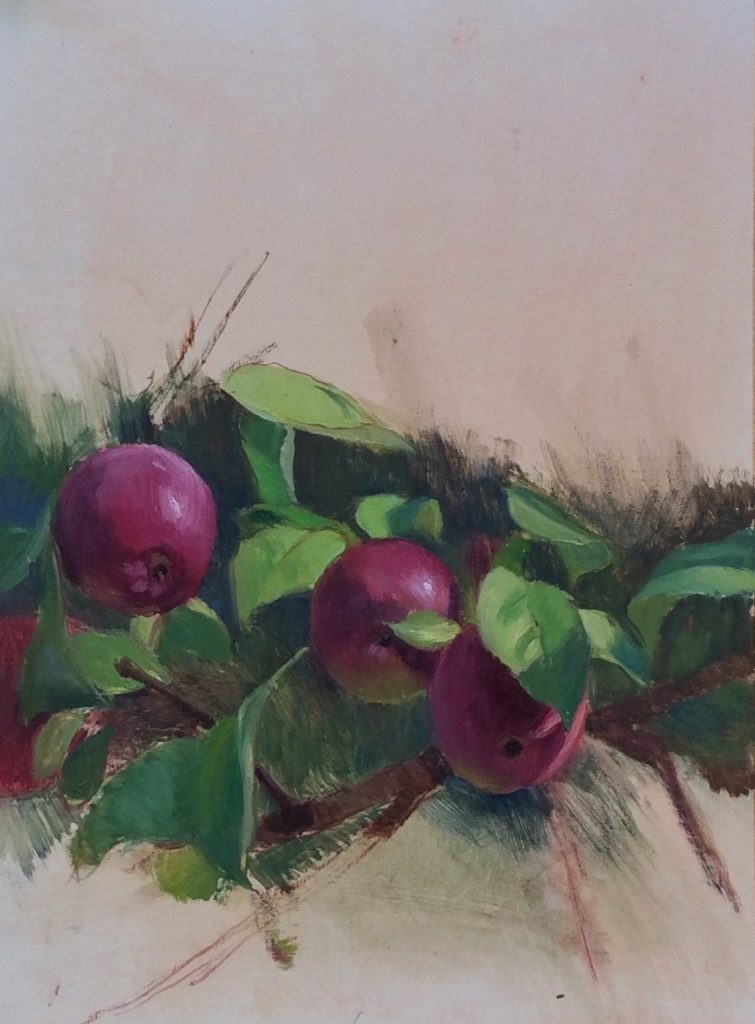
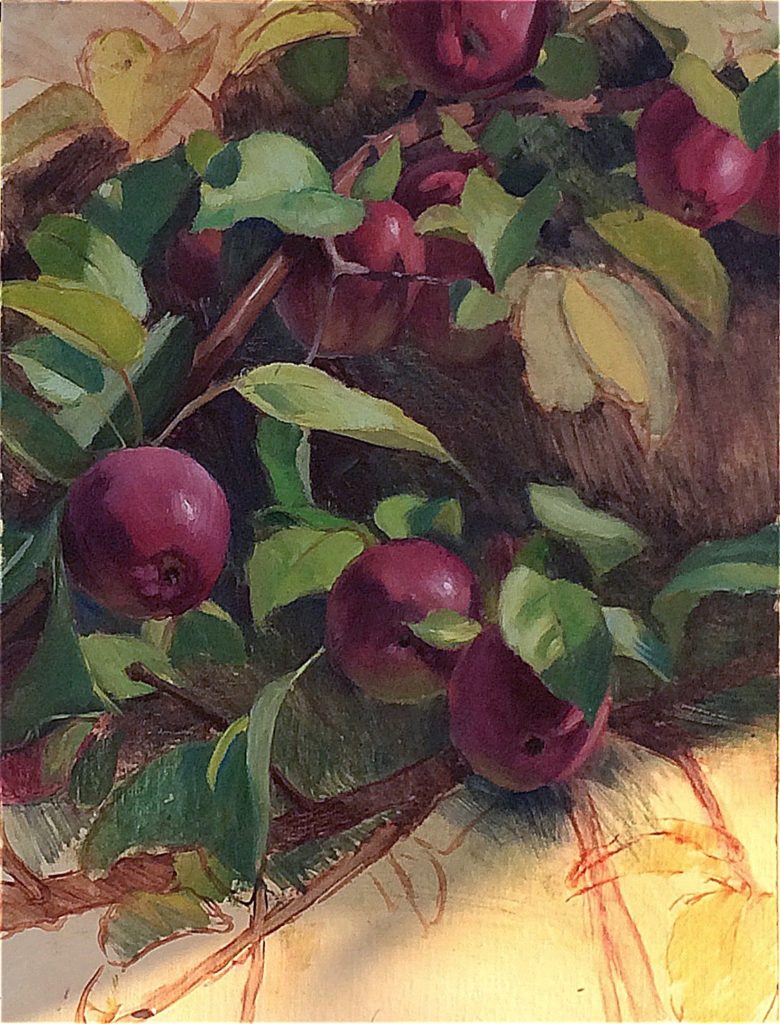
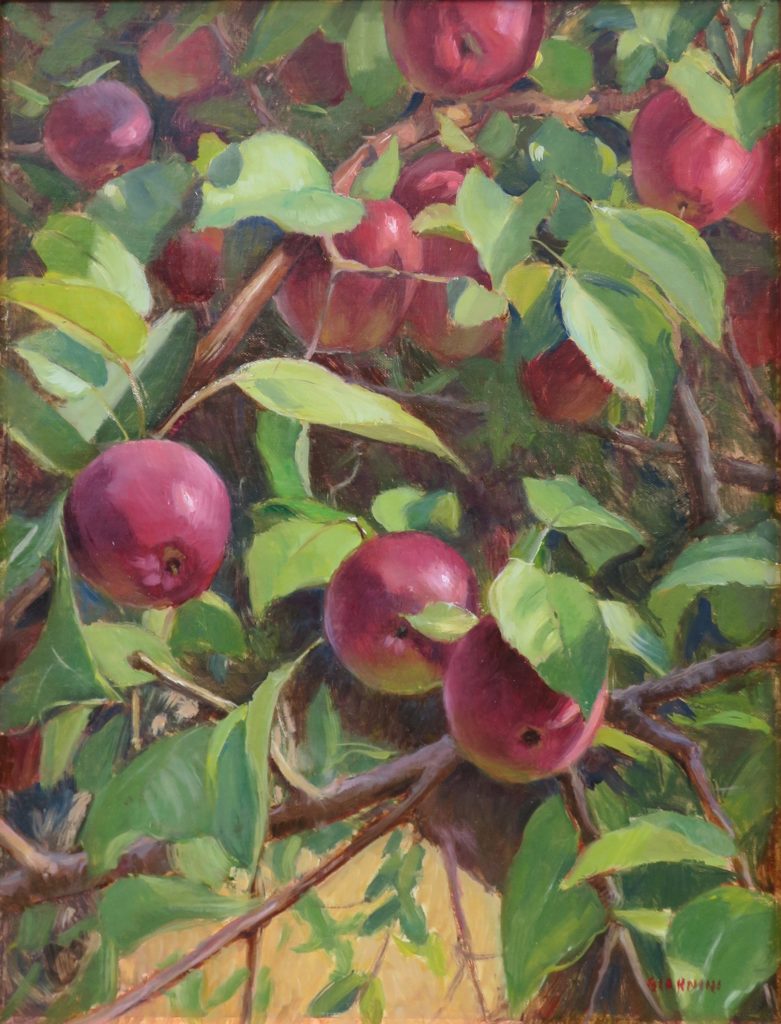
Giannini credits the Palette & Chisel Academy for offering him solid training through its classes and workshops, as well as the opportunity to work alongside talented and dedicated artists. “The first time I did plein air painting was when I went out in the field with other artists associated with the Palette & Chisel,” he recalls.
“Several of us went to Wisconsin to paint, and I stayed in Daniel Gerhartz’s loft. One of the artists who joined us was T. Allen Lawson, and working alongside Dan and Tim was an eye-opening experience. When I moved to Connecticut to study at the Lyme Academy in the mid-1990s, I used my free time to continue painting small landscapes outdoors.
“As I say, I am comfortable painting the identity of the subject I select and rendering appearance with precision. It happens that my approach appeals to collectors who see my paintings online, in galleries, or during plein air events. I suspect that I sell work at events because people like buying paintings of locations they can identify and with which they have a personal connection. In all the plein air festivals I have been part of, I usually sell paintings and win small prizes (honorable mentions), but I have to say that it is often hard to justify going to the events when sales and prize money don’t cover my expenses.”
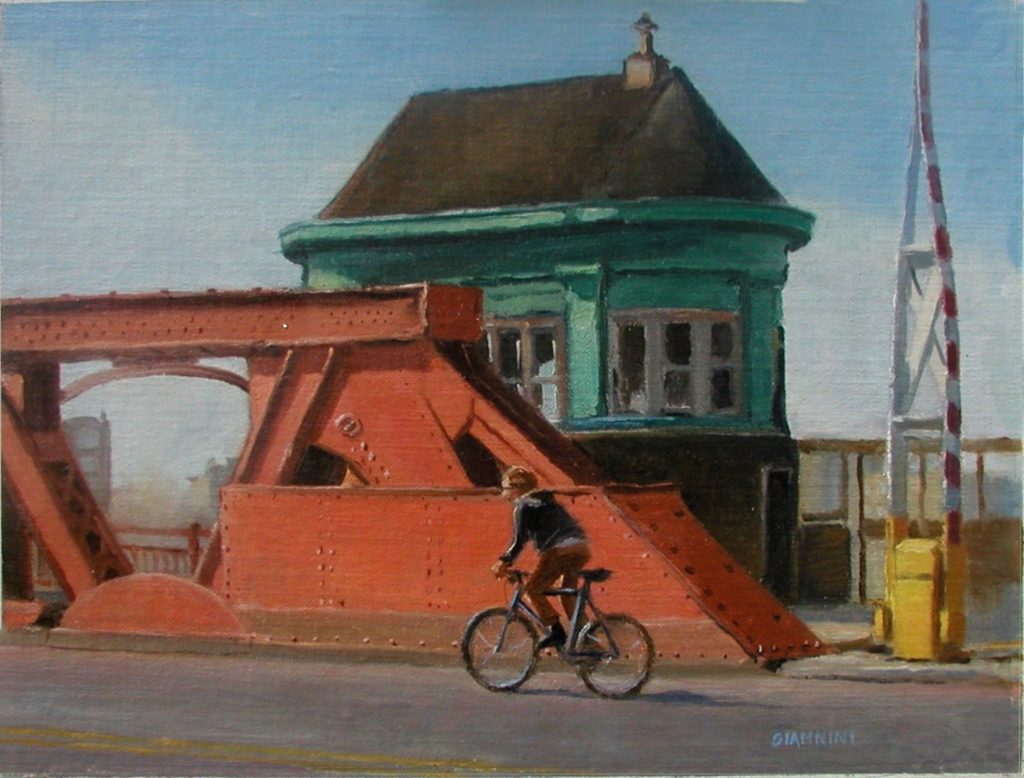
Plein air and studio
Asked about the specific materials and techniques he uses outdoors, Giannini explains that for many years he painted on linen taped to boards that he would later attach to stretcher bars. However, he recently changed that method and now uses Miracle Muck to adhere linen to acid-free boards. “I need a lot of surfaces when I go out on location, and that’s why I switched to lightweight panels,” the artist says.
Giannini carries a full palette of colors with him when he heads into the field, but he uses only four or five of those oil colors on any one painting. When painting figures in the studio, he works with the so-called Zorn palette of limited colors (yellow ochre, cadmium red medium, ivory black, titanium white) through most of the painting and adds a few colors late in the process. He sometimes modifies the oils with a medium, either one made with two-thirds mineral spirits and one-third linen oil or a fast-drying alkyd-based product. Both indoors and outdoors, he starts painting with bristle brushes, then switches to Rosemary Master Stroke brushes.
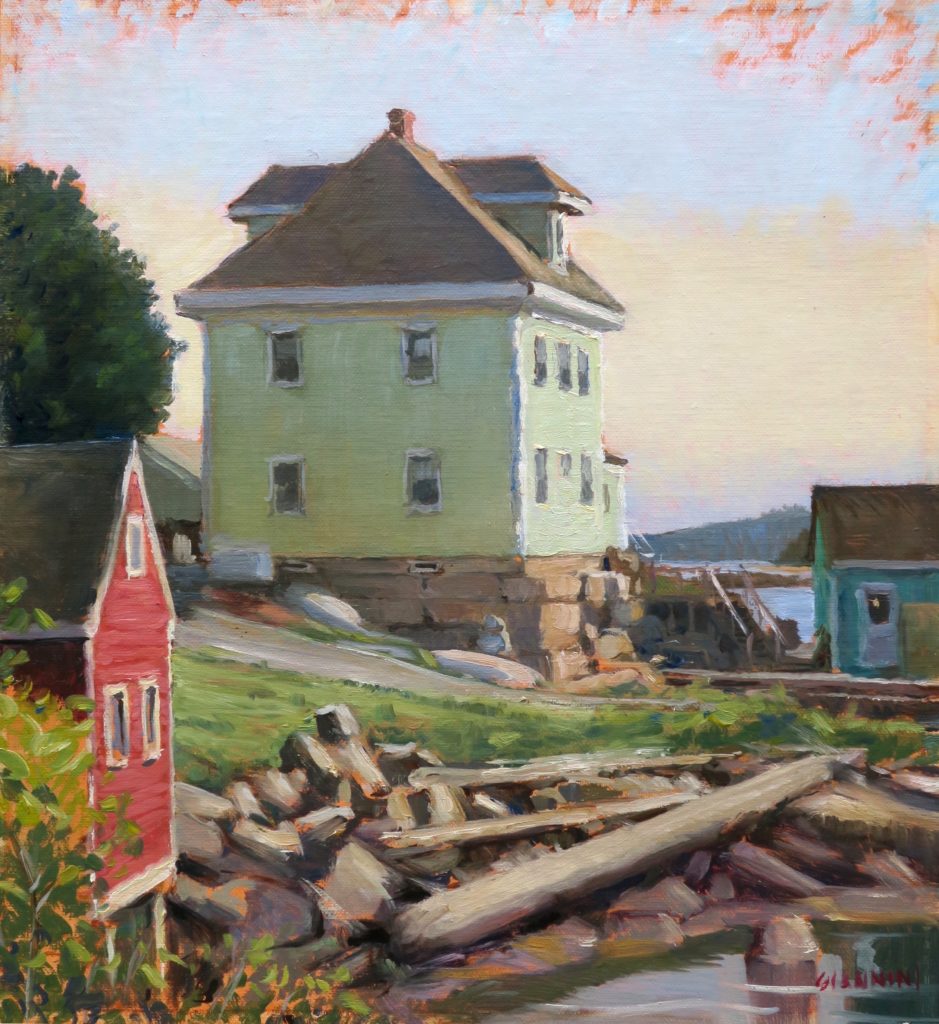
Giannini moved back to Chicago after completing his studies at the Lyme Academy in Connecticut, and he was hired by a company that solicited commissions for murals and faux finishes. After a few years of building his reputation and contacts, he started his own business doing similar decorative finishes, murals, and restorations. That business flourished until the late 1990s, when the economy took a nose dive and far fewer commissions were available.
About that time, he saw a special television documentary on the restoration of Radio City Music Hall and reached out to the company doing that work, EverGreene Architectural Arts. “I worked for EverGreene as a full-time employee starting in 2000,” he says, “and I continue to work for the company on a freelance basis from my home in Maine.”
Some of the decorative and restorative projects Giannini worked on involved a great deal of gilding, and that now makes it relatively easy for him to gild his own picture frames. “I have a local framer cut the stock, and I apply the gilding,” he explains. “It’s fairly basic gilding, but it allows me to afford better frames for my paintings. I think the gilding helps distinguish my paintings in a crowded display mounted at the end of a plein air festival.”
Giannini enjoys traveling and painting, and his substantial and varied talents have allowed him to live and work in a number of countries. “In the last decade, I have resided and painted in Amsterdam in the Netherlands, traveled and painted throughout Southeast Asia, visited Australia and Bali, and I made two long painting trips to Rome and southern Italy in 2013 and 2016. Those began a journey to connect to my Italian roots (I hold a second citizenship).”
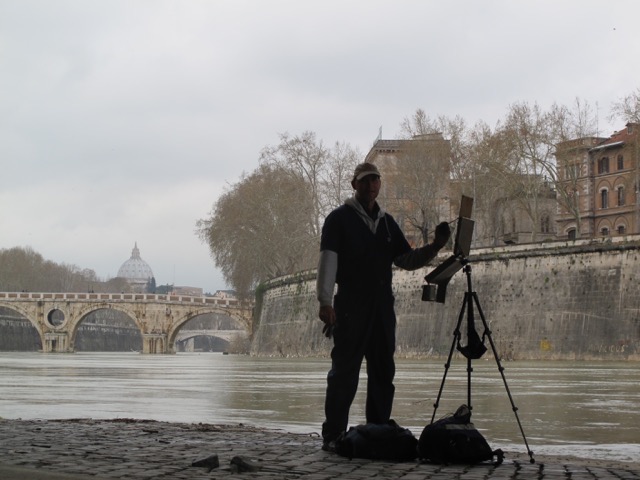
Connect with Stephan Giannini:

